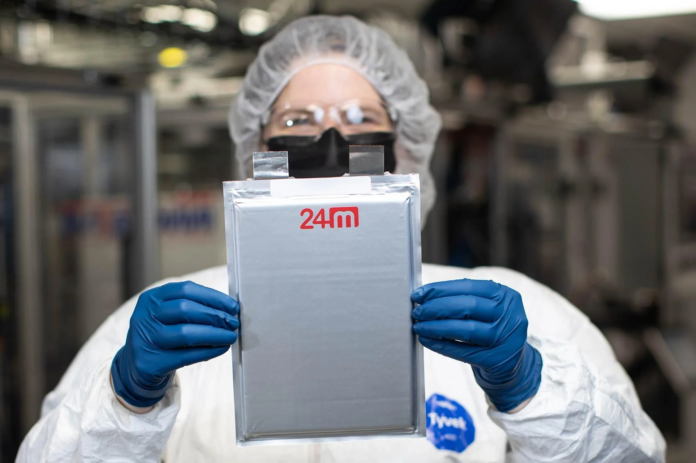With the global EV fleet projected to skyrocket to 250 million by 2030 and some markets already reporting a 33% jump in EV fires, the stakes for battery safety have never been higher. 24M Technologies, a leader in battery innovation, is urging the industry to confront this escalating threat head-on, warning of a potential billion-dollar recall crisis if battery cell design isn’t fundamentally rethought.
Energy Density and Faster Charging Compound Safety Risks
Beyond the sheer volume of EVs, the increasing energy density of battery cells is another critical factor impacting safety. The pursuit of longer ranges and greater EV adoption has led to energy-rich materials and reduced safety margins within cells. Despite rigorous manufacturing processes, the risk of contamination and other process failures cannot be entirely eliminated. This, coupled with the advancement of ever-faster charging capabilities, heightens the threat of internal short circuits – events that cannot be stopped externally.
Billion-Dollar Recalls Demand a Design Rethink
The financial implications of EV fire recalls are immense, estimated at a staggering $1 billion per vehicle model line. This necessitates a fundamental shift in cell design to prioritize inherent safety. While existing systems focus on containing fires once they ignite, 24M Technologies believes that a proactive approach, addressing and preventing the root causes of thermal incidents, is crucial. Failure to do so could saddle automakers with significant additional costs in the coming years, alongside escalating risks to public safety.
Decades-Old Battery Design at the Root of the Problem
Naoki Ota, President and CEO at 24M Technologies, states that the industry’s current safety challenges stem from decades-old battery design principles. “While we’ve achieved remarkable progress in cost reduction and energy density, we’re still building upon architectures that have not fundamentally changed in more than 30 years. Process improvements alone cannot address these design limitations, and multiple OEMs have faced costly recalls as a result. Rather than address these issues through add-on system features, safety must be incorporated as a foundational element at the core of the battery cell.”
Battery Safety Should Be a Top Automotive Priority
24M emphasizes that battery safety and health should be paramount in automotive design. This is like critical safety systems such as steering and brakes. The automotive industry uses Design Failure Mode and Effects Analysis (DFMEA) to identify critical risks. A severity rating of 10 indicates a serious adverse effect on consumer safety, including life-threatening injuries. When a DFMEA rating is 9 or 10, only a design change can mitigate the risk. 24M believes batteries and their inherent safety concerns should be treated as a severity 10 rating.
Dendrite Growth: The Inevitable Pathway to Thermal Runaway
A primary cause of lithium battery fires is dendrite growth in cells. Dendrites are inevitable as a battery ages and undergoes thousands of charge/discharge cycles. They can also occur through overcharging, charging at very low temperatures, or frequent fast charging/discharging. This can create a short circuit or ‘thermal runaway.’ The cell overheats, releasing flammable gases that then ignite. Only one cell needs to overheat, which can happen in milliseconds. Once an event begins, it is impossible to stop without intervention. It risks propagating to adjacent cells, the battery, and ultimately the vehicle.
Impervio: A Proactive Solution to Prevent EV Fires
Naoki Ota further explains 24M’s proactive solution: “The solution is to incorporate transformative in-cell fire prevention technology. 24M’s pioneering Impervio system uniquely suppresses dendrites and neutralises thermal runaway before it can start. Unlike other technologies, Impervio not only monitors individual cells but prevents thermal incidents. The industry must shift from reactive measures that try to contain fires to proactive designs preventing failures before they occur. Without this step change approach, the safety and financial challenges will only intensify as EV adoption accelerates.“
EV Fires: A Greater Risk in Parked and Charging Vehicles
While EVs are statistically 20 times less likely to catch fire than ICE vehicles, they pose a greater risk when parked or charging in public and private garages, apartment blocks, shopping centres, and other buildings. EV fires are harder to extinguish. Internal chemical reactions sustain them and can reach extreme temperatures. Traditional firefighting methods can prove ineffective. The fires can reignite hours or even days and weeks later due to residual energy in undamaged cells. This requires specialised equipment and prolonged cooling periods.
Impervio Demonstrates Superior Fire Prevention
Ulrik Grape, President, European Operations, at 24M Technologies, states: “Impervio offers a proactive solution for the world’s car makers, fundamentally changing how battery safety is approached through revolutionary new battery cell design. Controlling the cell at the individual electrode level, the Impervio separator actively suppresses dendrite growth within cells while enabling sophisticated monitoring capabilities for early fault and short-circuit detection. It can shut down a cell that is at risk – monitoring, preventing, containing – and represents a step change in safety while offering the capability to massively reduce risk and financial exposure.”
In a side-by-side test of two NMC/graphite cells, one with Impervio and the other with a conventional separator, charged to 100% and then overcharged, non-Impervio cells saw dendrite growth-induced micro shorts after 15 minutes. The cell formed a hard short, caught fire, and then exploded after 38 minutes. However, cells with 24M’s Impervio technology saw negligible temperature increase, did not short, and did not catch fire – even after an entire hour of overcharging.
Seamless Integration and Targeted Recalls with Impervio
Impervio seamlessly integrates with conventional lithium-ion, lithium metal, and 24M’s proprietary LiForever cells. It provides continuous cell monitoring. This enables OEMs to identify and address potential issues before they escalate into safety hazards. Furthermore, Impervio allows OEMs to target recalls to specific affected units rather than recalling an entire model line. This potentially saves billions in recalls while maintaining optimal safety standards. In addition, Impervio can improve battery state-of-health (SOH) and end-of-life (EOL) predictions, influencing overall battery life and potential reuse.
Impervio: Available Now for Next-Gen Battery Designs
Impervio is available today. 24M Technologies is actively collaborating with several industry partners and leading car makers to integrate this technology into next-generation battery designs. These innovations offer manufacturers a quick path forward to enhance safety and maintain performance standards essential for widespread EV adoption.





